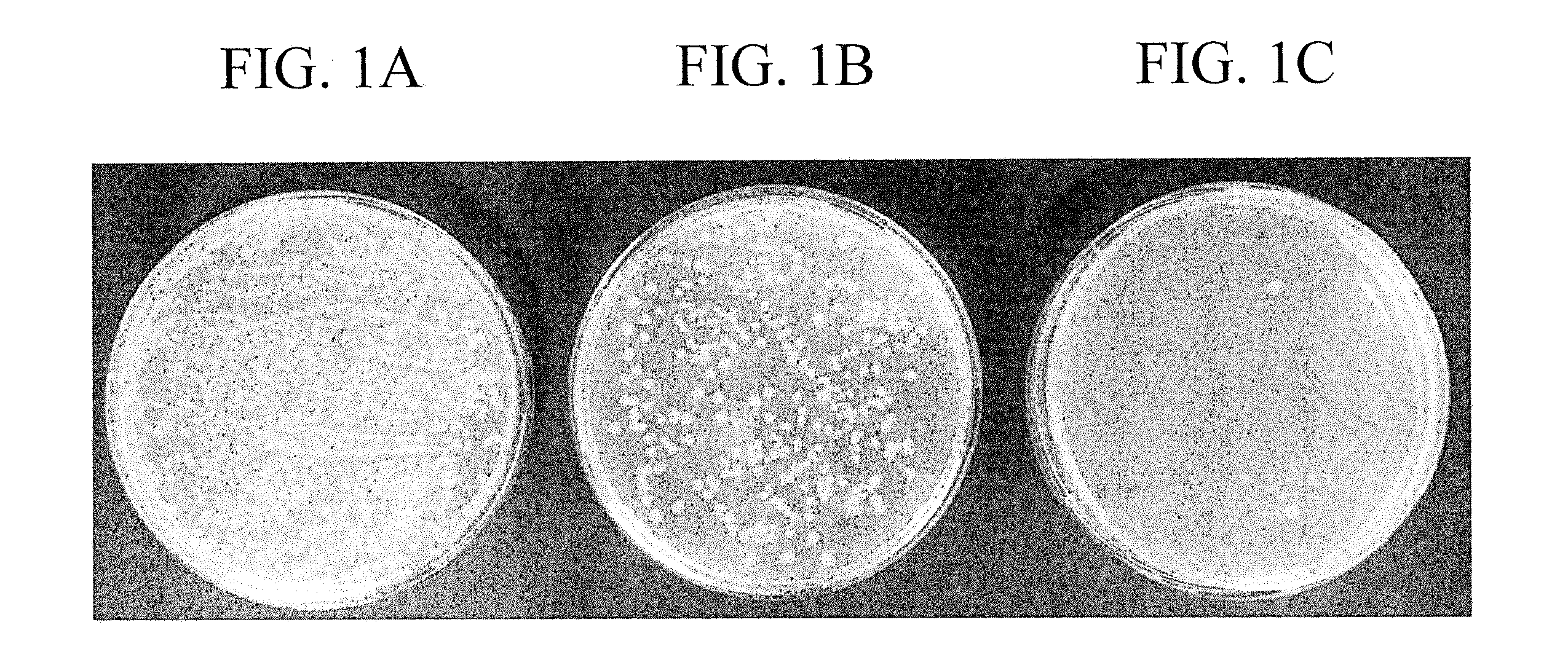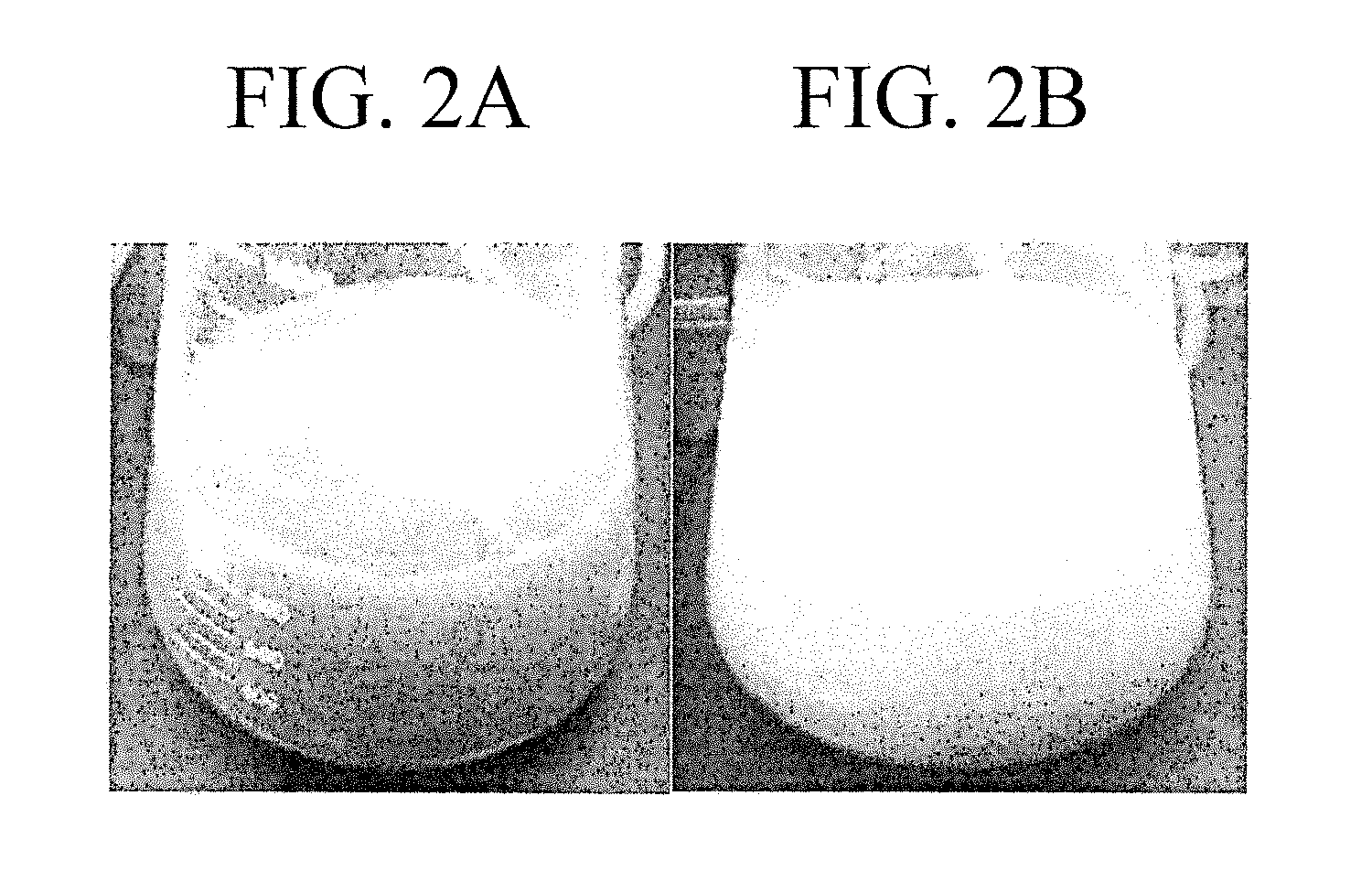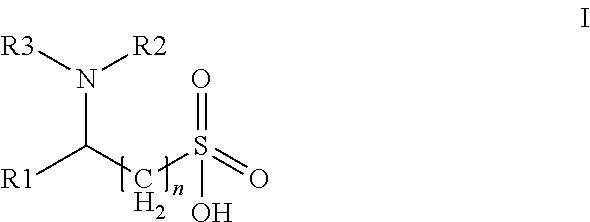Disinfecting composition for removable dental appliances
a technology for dental appliances and compositions, applied in the field of compositions for disinfecting dental appliances, can solve the problems of increasing the likelihood of infection for wearers, wearers showing bad breath, and residue accumulation on dental appliances, and achieve the effect of enhancing the anti-microbial effect of them
- Summary
- Abstract
- Description
- Claims
- Application Information
AI Technical Summary
Benefits of technology
Problems solved by technology
Method used
Image
Examples
example i
[0032]The composition recited in Table 1 was used in this Example I.
TABLE 1COMPONENTGRAMS Per DoseSodium Dichloroisocyanurate0.013Sodium Dodecyl Sulfate0.096Anhydrous Citric Acid1.057Anhydrous Sodium Carbonate0.673Sodium Tripolyphosphate0.384Anhydrous Sodium Sulfate0.2482-(N-Morpholino)ethanesulfonic Acid0.00048
[0033]To the composition was added 100 ml of tap water, and vigorous effervescence occurred. A DOCTOR'S brand plastic night guard, which was coated with an accumulated layer of biofilm from normal wear, was added to this solution. After 5 minutes, the appliance was removed, rinsed briefly with water, and stained with an FD&C Red 20 plaque disclosing dye tablet. No staining was noted, indicating that the biofilm had been removed by soaking in a solution of the composition.
[0034]A nearly identical night guard was used as a positive control (it was soaked in plain tap water only) and showed extensive staining.
example ii
[0035]The purpose of this study was to evaluate the bactericidal effect of the Applicant's formulation of Example I against a representative panel of relevant oral bacteria at recommended consumer use conditions for dilution of product, temperature of solution, and contact time. Two and a half grams of the composition of EXAMPLE I were dissolved in 80 mL of water to form an aqueous solution.
Experimental
4.1 Stock Organism Preparation
[0036]4.1.1 Seed-lot culture maintenance techniques were used so that the viable microorganisms used for inoculation was not more than 3 passages removed from the original master seed-lot and no older than 15 days from its preparation date. Each strain was grown as recommended by ATCC or with past experience.
[0037]4.3.3 The cell concentration (CFU / ml) was determined in all working organism suspensions by serial dilution and plating. 10-fold serial dilutions were prepared by using 1.0 ml of suspension into 9.0 mL of PBS.
[0038]4.3.3.1 For K. pneumoniae: The...
example iii
[0053]A working suspension of BL21 E. coli cells in LB broth (1.16×108 CFU / ml) was contacted for 15 min at 37° C. with either 1× PBS buffer (control), 2-(N-morpholino)ethanesulfonic acid (“MES”) (final conc. of 25 μM or 0.0049 mg / ml), Sodium Dichloroisocyanurate (“NaDCC”) (final conc. of 0.9 mg / ml), or MES (final conc. of 25 μM or 0.0049 mg / ml)+NaDCC (final conc. of 0.9 mg / ml). Lysogeny broth (LB), a nutritionally rich medium, is primarily used for the growth of bacteria.
[0054]After contact, ten-fold serial dilutions from 1:10 to 1:106 were prepared using DIE neutralizing broth and an aliquot at each dilution (100 μl) was plated onto an LB agar plate and incubated for 20 hours at 37° C.
[0055]The plate shown in FIG. 1A corresponds to treatments with MES-only at a plating dilution of 1:1×104. The plate shown in FIG. 1B corresponds to treatments with NaDCC-only at a plating dilution of 1:10. The plate shown FIG. 1C corresponds to treatment with MES+NaDCC at plating dilution of 1:10.
[00...
PUM
| Property | Measurement | Unit |
|---|---|---|
| solubility | aaaaa | aaaaa |
| weight percent | aaaaa | aaaaa |
| weight percent | aaaaa | aaaaa |
Abstract
Description
Claims
Application Information
 Login to View More
Login to View More - R&D
- Intellectual Property
- Life Sciences
- Materials
- Tech Scout
- Unparalleled Data Quality
- Higher Quality Content
- 60% Fewer Hallucinations
Browse by: Latest US Patents, China's latest patents, Technical Efficacy Thesaurus, Application Domain, Technology Topic, Popular Technical Reports.
© 2025 PatSnap. All rights reserved.Legal|Privacy policy|Modern Slavery Act Transparency Statement|Sitemap|About US| Contact US: help@patsnap.com



